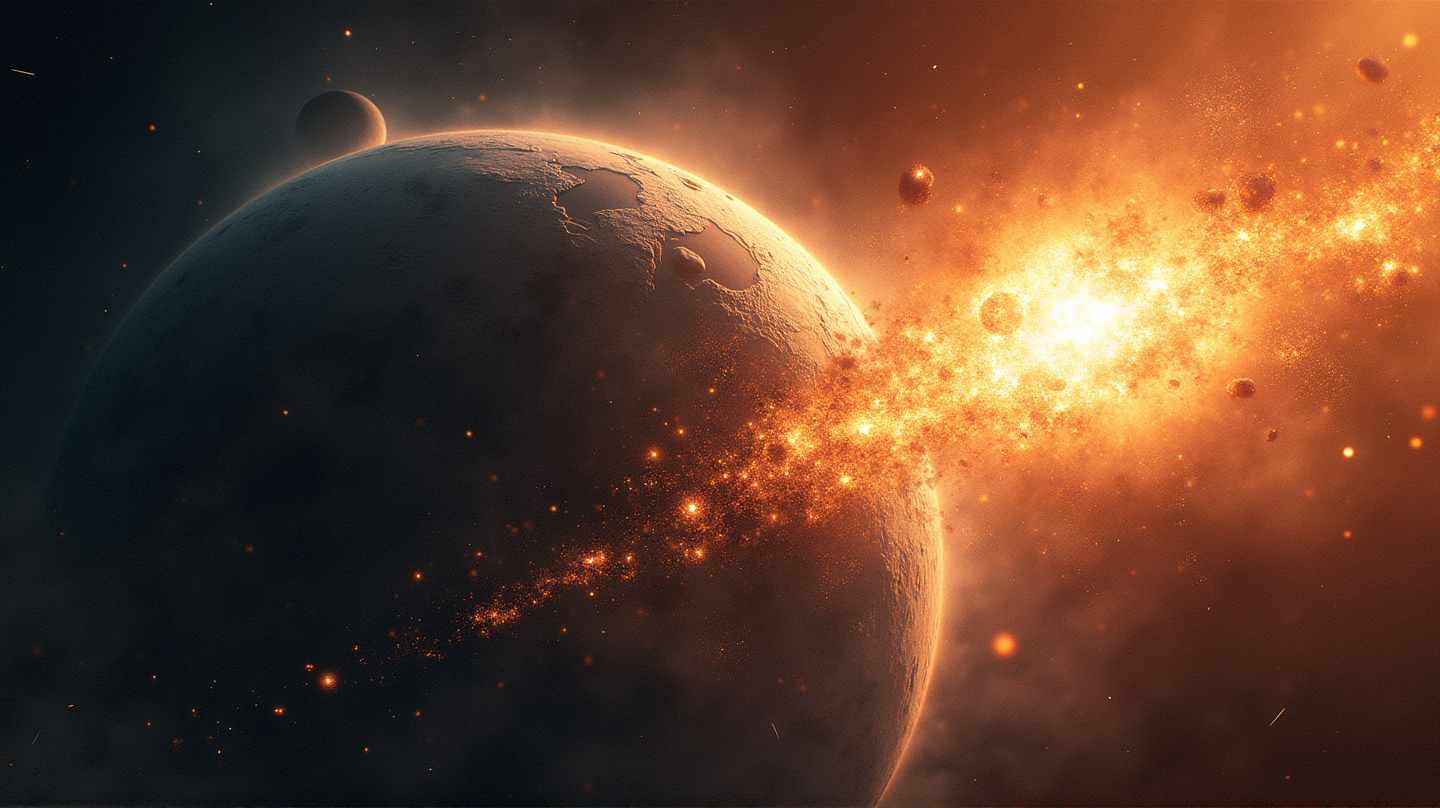The Moon, Earth’s eternal companion in the cosmic dance, may hold the secrets of an ancient collision that reshaped our planet’s destiny. According to ScienceDaily, scientists from the Max Planck Institute for Solar System Research have traced the cosmic breadcrumbs scattered in Earth and lunar rocks, guiding us to the possible origins of Theia, the elusive protoplanet that collided with Earth billions of years ago.
The Distant Echo of a Cosmic Collision
4.5 billion years ago, a cataclysmic event transformed the geological face of Earth. The mysterious protoplanet, Theia, veered too close and ultimately collided with the young Earth. This violent impact not only reshaped our planet but also birthed the Moon from the consuming cosmic debris. Yet, throughout the sands of time, Theia has become a fleeting ghost, leaving only chemical whispers in its wake.
Decoding Theia’s Celestial Puzzle
Researchers now stand at the forefront of uncovering Theia’s secrets, leveraging state-of-the-art isotopic analysis. By examining precise iron isotope ratios in lunar samples brought back from the Apollo missions, they are reconstructing the enigmatic planet’s ancient composition. Their meticulous study reveals that Theia likely originated closer to the Sun than Earth, its birthplace hinted at through the isotopic signatures locked within minerals.
Piecing Together the Planetary Past
Despite the magnitude of its impact, pieces of Theia are now woven into the very fabric of Earth’s being. The isotopic fingerprint encased in the mantle tells stories of titanic collisions and cosmic chemistry. In a revolutionary journey of reverse engineering, scientists connect the dots between present materials and their prehistoric dance across the solar system, attempting to solve the planetary mystery once and for all.
The Unearthed Chronicles of Theia
Could the Moon we gaze upon be more of Theia than of Earth? It’s a question researchers continue to pursue with fervor. The isotopic harmony discovered between Earth and Moon rocks poses numerous hypotheses, challenging scientists to delve deeper. The quest to distinguish Theia’s contributions from Earth’s in the Moon’s make-up is akin to piecing together a celestial jigsaw, where every element, like zirconium and molybdenum, speaks of planetary lineage.
Meteorites as Messengers of the Past
Crucial insights into Theia’s origin come from comparing meteorites as earthly emissaries of solar history. These space relics offer glimpses into the construction of Theia, suggesting its unique mix couldn’t find a full match among known meteorite clans. Mathematically sifted through, the data imply Theia’s celestial building blocks lay amid regions of the inner Solar System, perhaps just beside Earth itself, fueling speculations of a once cosmic neighbor.
Each fragment of evidence, every isotopic clue, aids in peeling back layers of cosmic silence to envision a time when planets were still in their infancy, writing chapters in the grand cosmic narrative. The findings enrich our understanding of planetary evolution and serve as a thrilling step closer to unravelling Theia’s true story, forever entwined with the Moon’s shadowed allure. “`
